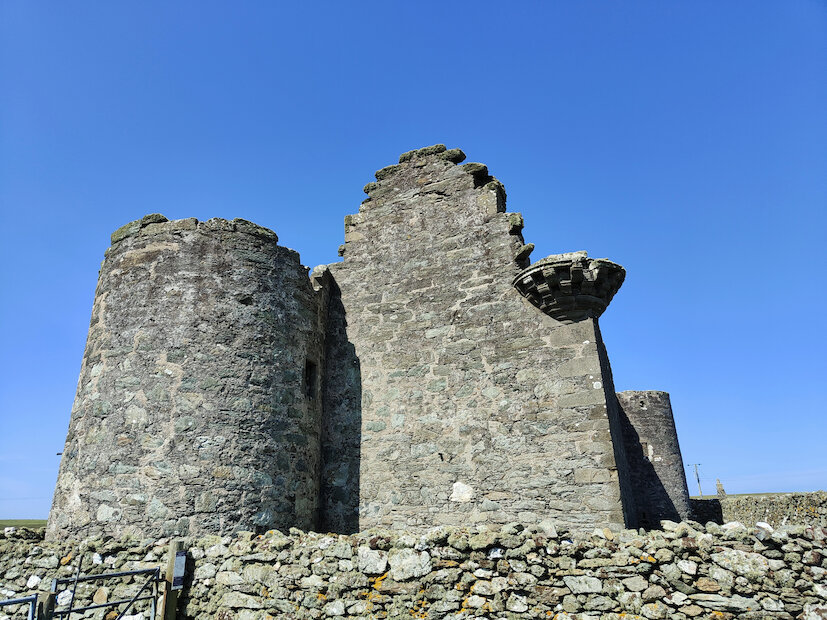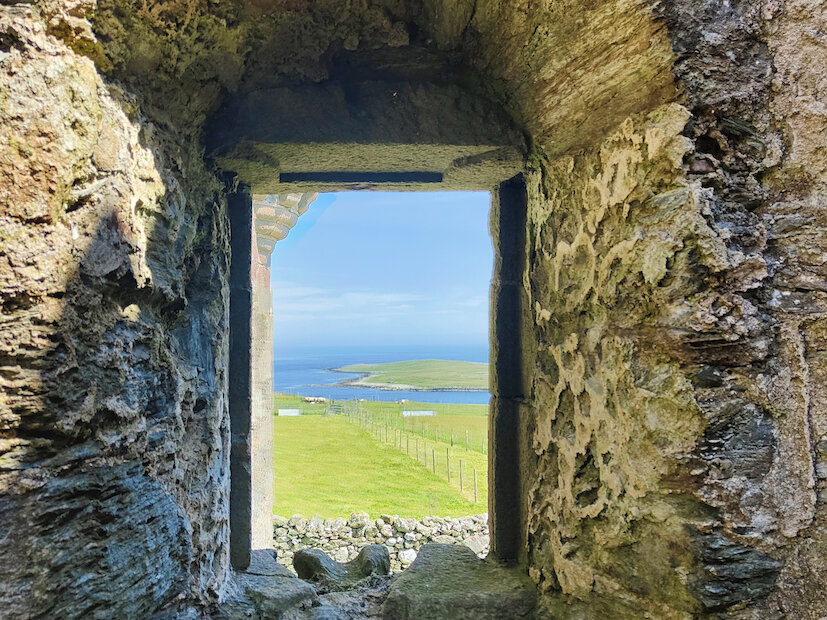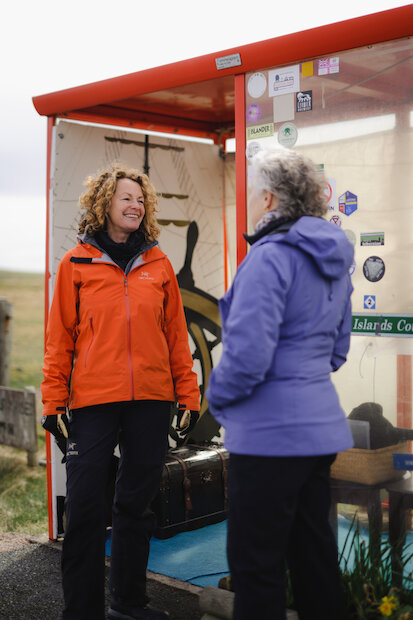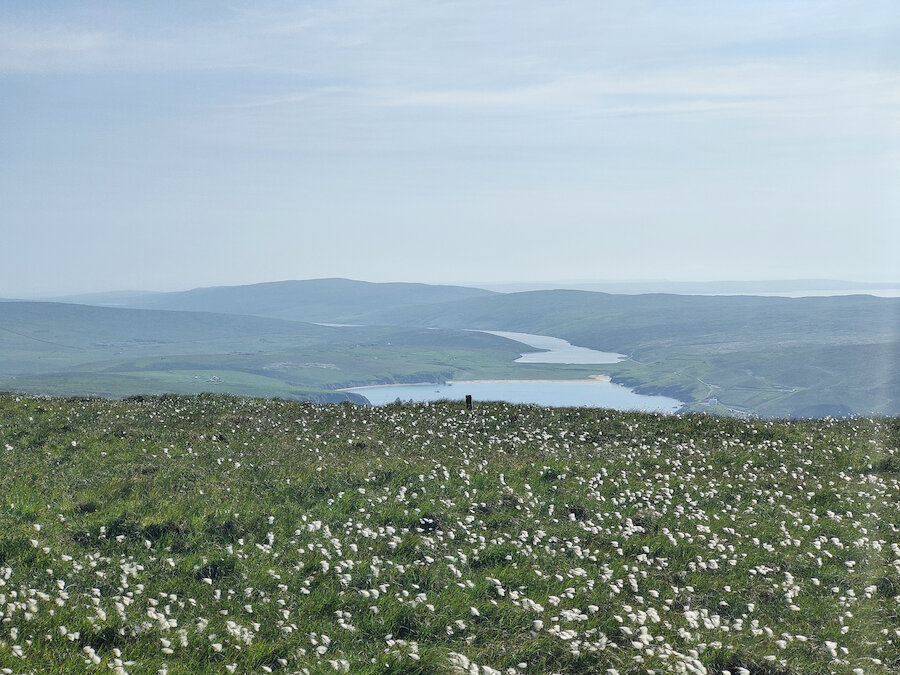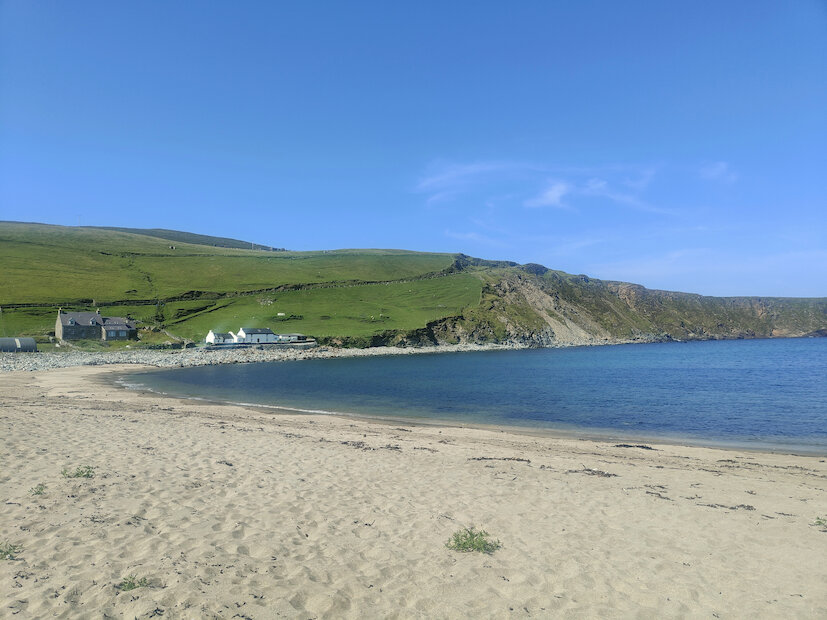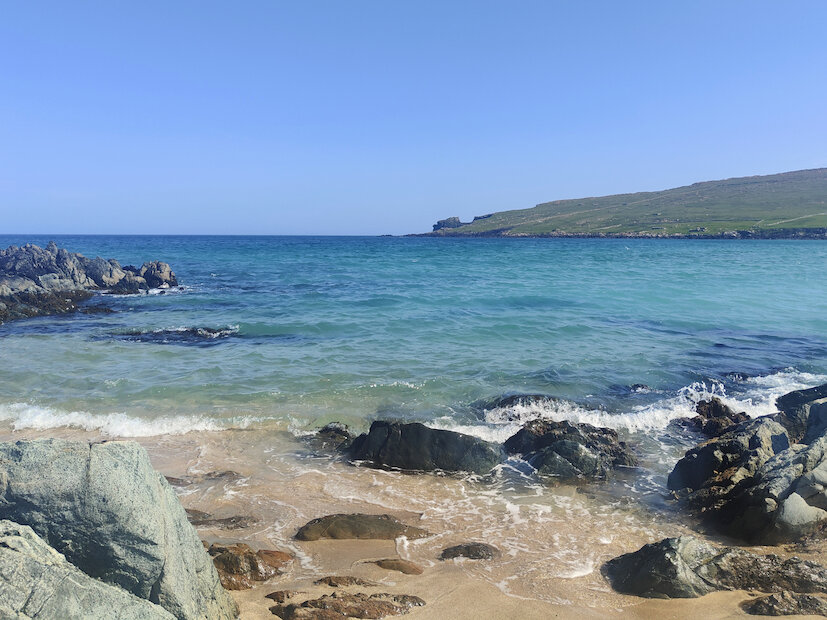As afternoon drew towards evening, the wind started to pick up and cloud began to punctuate the sky. We decided to make a final stop at Saxavord radar station, located on Unst’s highest hill. From this viewpoint, we saw the outline of the island below, trying to identify the places we had been in the patchwork of hills and bays.
Cotton grass, highlighted by the sun, moved with the breeze, transforming the land to silver and green. Turning to face the other way, the sea stretched forever, a distant shimmer at the horizon.
Muckle Flugga lighthouse shone white against grey rock, at the very northernmost point of Shetland and the UK. We were so close to Hermaness nature reserve, home to important seabird colonies, that the sky was filled with gannets. Wings outstretched, they moved with purpose bringing food to their chicks.
Although this was to be the final stop, the island’s ponies had other ideas. On our way to the ferry, we passed a field of mares and foals. We stood by the fence watching as the foals chased each other up and down the hill, while the mares grazed. Soon the foals grew curious about our presence, approaching the fence and allowing us to pet them.
It was a magical end to the day, quietly sitting with Shetland ponies in the sunshine, as colours of sunset crept into the sky.
